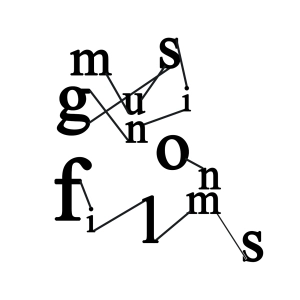
Scientology almost feels like a parody of a belief system. A 20th century science fiction writer, L. Ron Hubbard, is hailed as a prophet, creating generations of fanfiction in the decades ahead. But Arthur C. Clarke did not turn his fiction writing into a religion. The religion’s followers participate in acting classes, therapy sessions, lie detectors; become naval officers; own massive stretches of private property; produce high production values (yet incredibly tacky) promotional videos in a Hollywood studio.
Religion needs to be adapted into a modern concept and accept scientific progress and avoid fundamentalism in order to survive. But is Scientology the answer?
Louis Theroux is a documentarian I’ve admired for a while. Having spent the past decade and a half making films for the BBC, his feature film debut marks both a beginning and an end for Theroux. Theroux has been investigating American life his entire career, from Weird Weekends (1998-2000) until as recently as By Reason of Insanity and Transgender Kids (2015), before returning to the UK for this year’s television films (Drinking to Oblivion, A Different Brain and Saville). Investigating the Church of Scientology in Los Angeles, the film feels like somewhat of an epilogue to LA Stories and Twilight of the Porn Stars (2012).
Theroux’s shift to the big screen takes some getting used to. Theroux has always stood out as a documentarian because, alongside Michael Moore, Morgan Spurlock and others, he never hides his presence from his films, but embraces it, presenting both a sense of objectivity and transparency. Unlike Moore and Spurlock, Theroux is more restrained in his interview style, the very antithesis of Hollywood production styles: it isn’t showy, and refuses to be overly dramatic. But Theroux never feels as at home here as he is in his television documentaries.
Alongside Kate Plays Christine (2015) and The Act of Killing (2012, one of the inspirations for this film), Scientology is notable for its use of re-enactments. Scientology’s practices are not merely explained to the viewer, but acted out, sometimes even by the very same people who experienced these events years ago. In the absence of video footage and access to the people themselves, both David Miscavige (the leader of the Church) and Tom Cruise (one of its biggest advocates) are portrayed by actors.
But the film is under no illusions: re-enactments are no substitute for reality. We become immediately involved in the process of how these re-enactments are constructed, following Theroux as he auditions actors to portray both Miscavige and Cruise, interspersed with original film footage of the actual people from media appearances.
This is given further credibility through former Scientology official Mark Rathbun giving his blessing on certain subjects to recreate Miscavige. Even when the re-enactments choose slick, HD visuals, we remain aware of the constructed nature of the set: cameras on all sides, microphones from above, plywood behind rooms.
Theroux’s most recent documentary, Saville (2016), proved at its most interesting when Theroux reflected on his experience as a documentarian, questioning his sense of responsibility and his personal relationship with Jimmy Saville through new interviews with his victims and archival footage. Theroux’s interactions with Mark Rathbun also offers some level of introspection. Rathbun questions the very documentary formula of Theroux repeating a question multiple times to get a different answer, waiting for Theroux to ask him an interesting question. Later, they get in an argument after being harassed by some members of the Church, as Louis questions Rathbun’s own involvement in the very same process. Rathbun tells Theroux to go fuck himself.
Theroux does not deem this material unworthy, to be left on the cutting room form or included only as a DVD extra, but as an essential part of the documentary process. Rathbun reminds us that documentary subjects are not one-dimensioned individuals, but multi-faceted individuals. Where other documentarians may take an interview and twist a line of dialogue to define a person’s character, Theroux instead attempts to present a complex man who has different feelings at different times. He is not a monolithic person who always wanted to escape from Scientology.
Often, it doesn’t even feel like a documentary, it feels like a conspiracy thriller. Theroux is pursued by a white truck around LA; filmed outside his filming locations by Church members who refuse to disclose their name; finds Rathbun attacked as a “squirrel” numerous times; enters disputes over what counts as public property or trespass. Scientology’s followers rely on the omniscient, all-seeing God of the camera, documenting everything for their archive – something Theroux stresses when he raises his cellphone, creating an unending duel with a cameraman as they silently film each other.
These sequences provoked the biggest laughs in my audience, but they are also the most empty – we as viewers know what the Church’s response is going to be. Scientology is so guarded that the documentary often has to rely on presenting its guardedness in lieu of interviews.
Scientology closes far too soon, with too many lingering, unanswered questions. Yet the notion of creating a documentary on Scientology is a problematic idea to begin with; the film can never be definitive. Even in Saville, Theroux is able to provide some closure on the Jimmy Saville case. But Scientology has no answer, nor any way to validate its beliefs. I have no doubt that more information will come out over time; more members will defect and it will unravel itself. But now is not the time.

